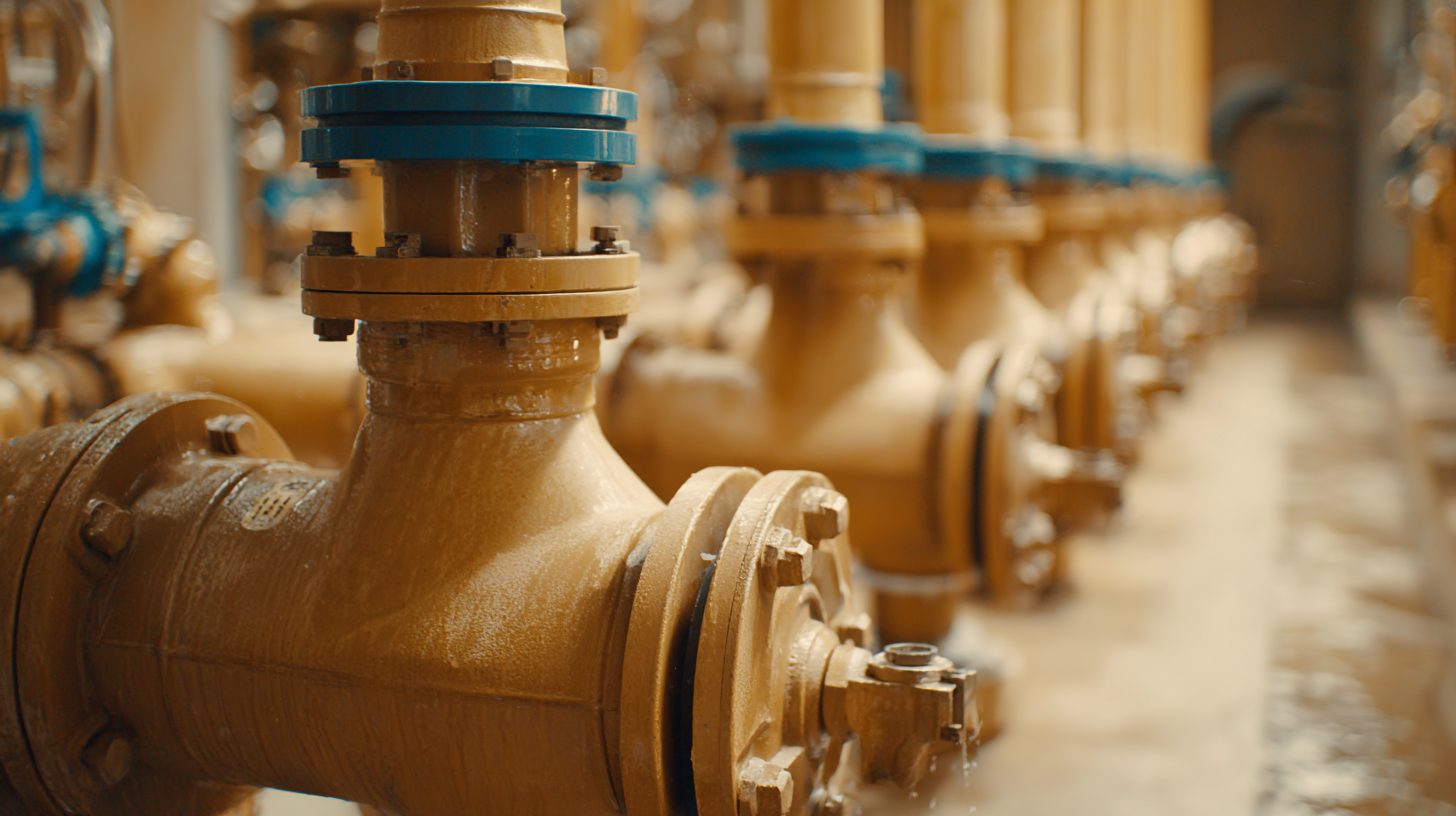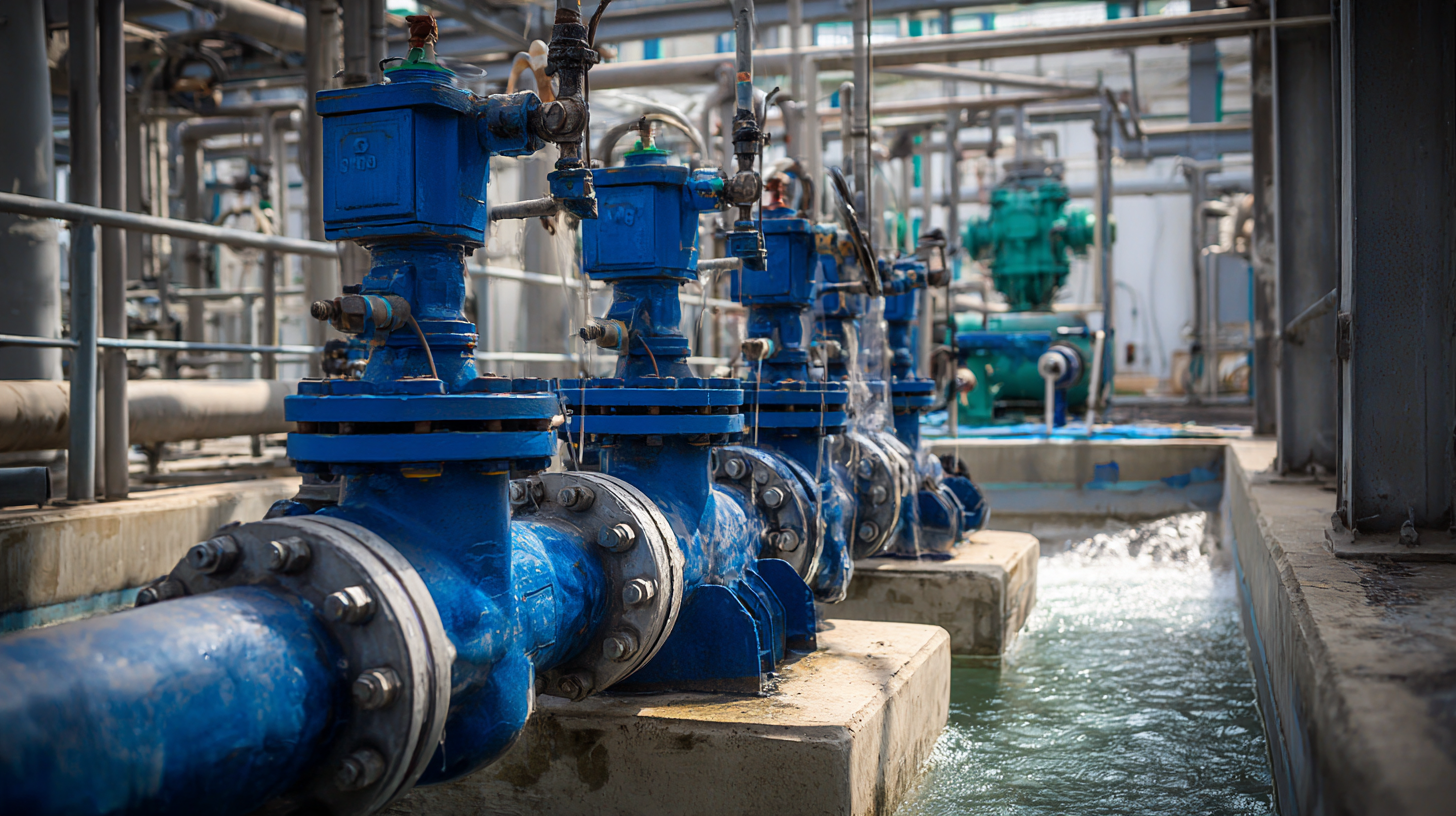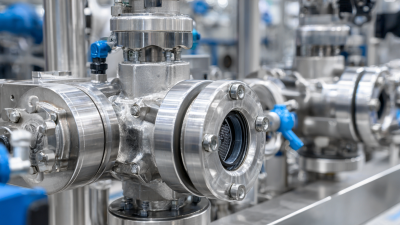Blog
- Home
- Blog
How to Optimize Pump Water Efficiency for Sustainable Resource Management
In the pursuit of sustainable resource management, optimizing pump water efficiency has emerged as a critical focus for industries reliant on water usage. According to the U.S. Department of Energy, inefficient water pumping systems can account for up to 20% of a facility's total energy costs, highlighting the need for effective strategies in this area.
 Furthermore, the World Bank reports that optimizing water resource management through improved pumping systems can lead to significant reductions in water loss, which is vital in the face of global water scarcity issues. Industries that implement advanced technologies and efficient practices in their pump water systems not only contribute to environmental sustainability but also enhance their operational efficiency and reduce costs.
As such, this guide will explore various methodologies for improving pump water efficiency, ensuring that organizations can effectively manage their resources while meeting the demands of a growing population and climate change challenges.
Furthermore, the World Bank reports that optimizing water resource management through improved pumping systems can lead to significant reductions in water loss, which is vital in the face of global water scarcity issues. Industries that implement advanced technologies and efficient practices in their pump water systems not only contribute to environmental sustainability but also enhance their operational efficiency and reduce costs.
As such, this guide will explore various methodologies for improving pump water efficiency, ensuring that organizations can effectively manage their resources while meeting the demands of a growing population and climate change challenges.
Understanding Pump Water Efficiency: Key Concepts and Metrics
 Understanding pump water efficiency is crucial for sustainable resource management, especially in sectors like agriculture and industry where water consumption is significant. Key concepts include the hydraulic efficiency of the pump, which defines how effectively it converts energy into water flow. This efficiency is measured against the power input and output—essentially assessing how much of the energy consumed translates into useful work.
Understanding pump water efficiency is crucial for sustainable resource management, especially in sectors like agriculture and industry where water consumption is significant. Key concepts include the hydraulic efficiency of the pump, which defines how effectively it converts energy into water flow. This efficiency is measured against the power input and output—essentially assessing how much of the energy consumed translates into useful work.
To enhance pump water efficiency, consider these tips: first, regularly maintain your pumps to prevent wear and reduce inefficiency. Simple actions such as cleaning filters and checking for leaks can significantly improve performance. Second, ensure that pumps are correctly sized for their intended use. An oversized pump can lead to energy waste and decreased efficiency, while an undersized system might struggle to deliver the needed flow.
Finally, invest in variable frequency drives (VFDs) to adjust the pump speed based on real-time demand. This not only optimizes the energy expenditure but also minimizes wear and tear on your equipment. By focusing on these metrics and practices, you can effectively manage water resources while ensuring that your operations remain sustainable and efficient.
Identifying Common Inefficiencies in Water Pump Systems
Water pump systems play a critical role in various industries, yet they often operate at less than optimal efficiency. According to the U.S. Department of Energy, poorly maintained pumps can lose 20 to 50 percent of their energy efficiency due to common issues such as misalignment and wear. Identifying these inefficiencies is the first step towards sustainable resource management in water networks. Regular monitoring and maintenance can dramatically improve performance, with studies indicating that a well-maintained pump system can achieve up to 90 percent efficiency.
Another prevalent inefficiency stems from improper sizing of pump systems. The Hydraulic Institute reports that oversized pumps can lead to increased operational costs, as they consume more energy than necessary. Moreover, they tend to operate under varying flow conditions, resulting in cavitation and additional wear. Implementing a system-based approach for pump selection, including analyses of dynamic flow conditions, can optimize water use and minimize waste. By addressing these common inefficiencies, industries can enhance their water management practices, leading to a more sustainable future.
Water Pump Efficiency Analysis
This chart illustrates the common inefficiencies found in water pump systems. The data highlights the percentage of energy loss due to various factors including improper sizing, wear and tear, and inefficient operational practices.
Implementing Best Practices for Pump Operation and Maintenance
Optimizing pump operation and maintenance is crucial for enhancing water efficiency and ensuring sustainable resource management. According to the U.S. Department of Energy, pumps account for approximately 20% of the total electrical energy used in industrial applications. Therefore, effective management of pump systems can lead to significant energy savings. Implementing best practices, such as regular monitoring of pump performance metrics, can help identify inefficiencies early. For instance, adjusting the pump operation to match system requirements can result in energy savings of up to 30% by reducing unnecessary flow and pressure.
Moreover, routine maintenance plays a critical role in sustaining optimal pump performance. A report from the Hydraulic Institute indicates that up to 50% of pump failures could be eliminated with proper maintenance practices. Scheduled inspections, such as checking seals and bearings, can prevent leaks and mechanical failures, thus prolonging service life and enhancing efficiency. Incorporating advanced technologies like condition monitoring systems can also facilitate proactive maintenance, ensuring pumps operate within their best performance curves. Emphasizing these best practices is essential for companies striving to improve their environmental footprint while maximizing resource efficiency.
Utilizing Technology to Monitor and Enhance Pump Performance
The integration of technology plays a crucial role in monitoring and enhancing pump performance, which is essential for optimizing water efficiency. Smart sensors and IoT devices can be employed to continuously track various parameters such as flow rate, pressure, and energy consumption. By analyzing real-time data, operators can identify inefficiencies or unusual patterns in pump operation. This proactive approach allows for timely interventions and adjustments, ensuring that pumps operate within optimal parameters, thus reducing energy waste and prolonging the lifespan of the equipment.
Moreover, advanced software solutions can facilitate predictive maintenance strategies, enabling operators to foresee potential failures before they occur. Machine learning algorithms can analyze historical data and recommend maintenance schedules based on actual performance rather than fixed timelines. This shift not only minimizes downtime but also enhances resource management by ensuring that pumps are running at peak efficiency when needed. By leveraging technology, organizations can significantly reduce their water usage and operational costs while contributing to more sustainable resource management practices.
How to Optimize Pump Water Efficiency for Sustainable Resource Management
| Parameter | Current Value | Optimal Value | Improvement (%) |
|---|---|---|---|
| Pump Efficiency (%) | 65 | 85 | 30.77 |
| Flow Rate (m³/h) | 120 | 150 | 25.00 |
| Energy Consumption (kWh) | 300 | 250 | -16.67 |
| Operational Cost ($) | 400 | 350 | -12.50 |
Incorporating Renewable Energy Sources for Sustainable Pumping Solutions
Incorporating renewable energy sources into pumping systems is crucial for enhancing water efficiency and promoting sustainable resource management. By utilizing solar, wind, and hydroelectric power, operators can significantly reduce dependence on fossil fuels, minimizing greenhouse gas emissions while lowering operational costs.
 Solar-powered pumps, for instance, harness sunlight to drive water movement, making them particularly effective in remote areas where traditional power grids are unavailable. This shift not only optimizes energy use but also contributes to a more resilient infrastructure capable of supporting sustainable agriculture and irrigation practices.
Solar-powered pumps, for instance, harness sunlight to drive water movement, making them particularly effective in remote areas where traditional power grids are unavailable. This shift not only optimizes energy use but also contributes to a more resilient infrastructure capable of supporting sustainable agriculture and irrigation practices.
Furthermore, integrating renewable energy technologies with existing pumping systems can facilitate smarter water management strategies. Advanced monitoring systems, powered by renewable energy, enable real-time data collection on water usage and energy consumption. This data can inform decision-making processes that enhance overall efficiency in water delivery and reduce waste. By aligning pumping operations with renewable energy sources, stakeholders can create a sustainable loop where energy production and water management work hand in hand, paving the way for a greener future in resource management.
Related Posts
-

How to Choose the Right High Pressure Pump for Your Industrial Needs
-

How to Choose the Best Chemical Pumps for Your Industrial Needs
-

5 Best Chemical Pumps for Efficient Industrial Use
-

How to Choose the Right Dosing Pump for Your Industrial Needs Based on Flow Rates and Chemical Compatibility
-

7 Best Practices for Choosing a High Pressure Metering Pump
-

5 Essential Tips for Maximizing Performance of High Pressure Hydraulic Pumps
